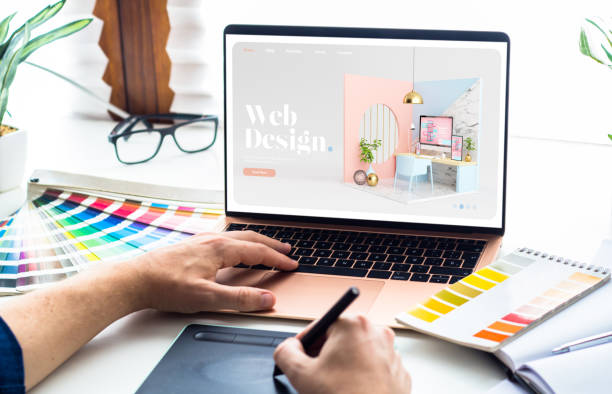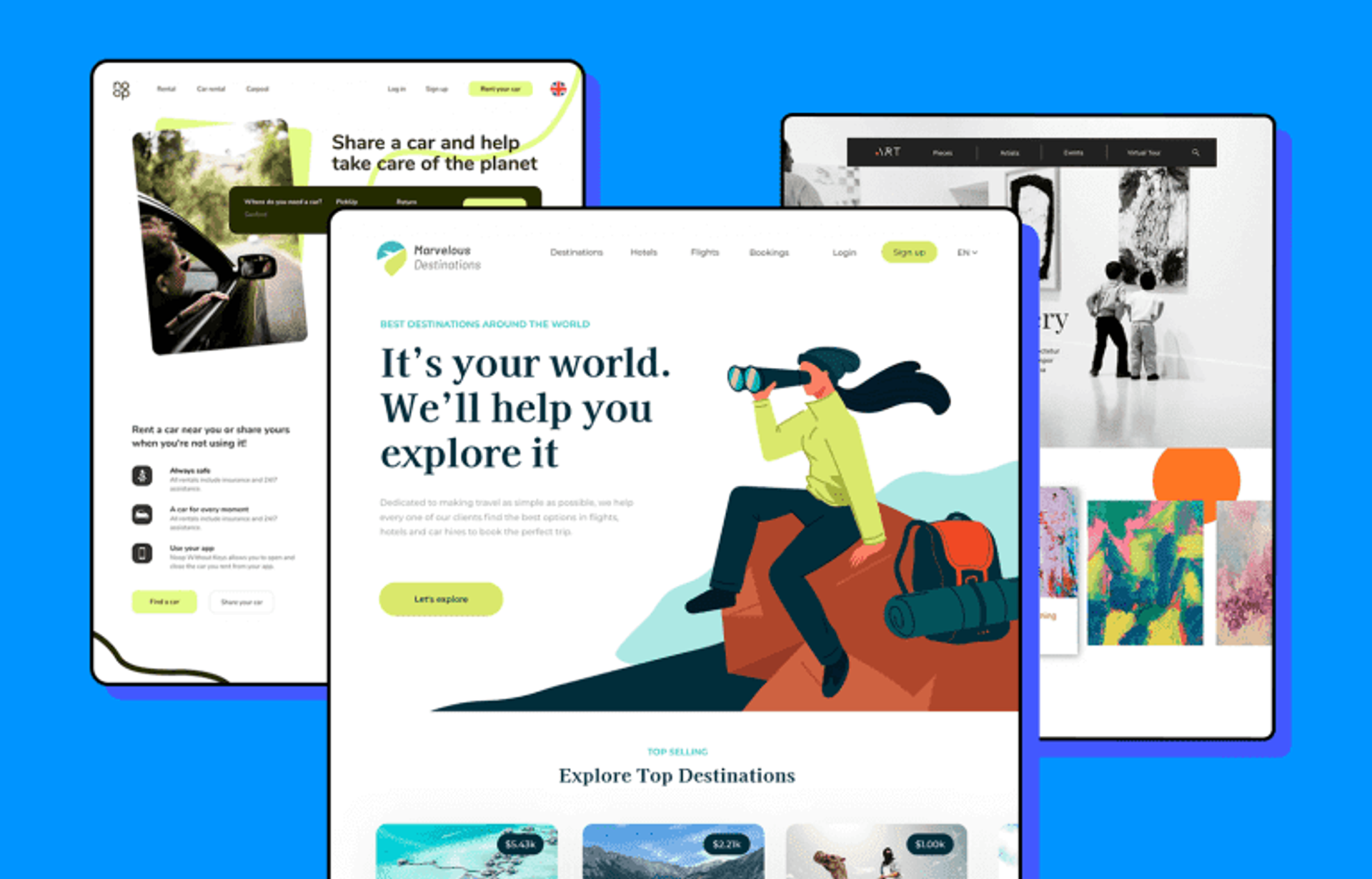Las Vegas Web Design Experts Providing Unique Digital Experiences
Las Vegas Web Design Experts Providing Unique Digital Experiences
Blog Article
Creative Web Layout Solutions for Modern and Engaging Websites
In the world of internet style, the pursuit of modern and interesting services has actually come to be progressively crucial for organizations aiming to record customer focus. By integrating vibrant shade plans, interactive components, and responsive designs, designers can create experiences that not just resonate with individuals however likewise enhance brand name identity.
Welcoming Strong Color Pattern
In web style, the tactical use vibrant color pattern can dramatically boost customer engagement and brand name identity. By employing vivid colors, developers can create aesthetically striking websites that catch attention and promote a remarkable experience. An appropriate color palette not just reflects a firm's worths however likewise evokes details emotions that can affect user habits.
Vibrant colors can be employed to assist users' focus to crucial elements such as contact us to action, boosting conversion prices. As an example, using contrasting shades for switches and links can make these aspects stand out, motivating individuals to connect more easily. A natural color plan throughout the internet site enhances brand name acknowledgment, developing a sense of familiarity and trust amongst site visitors.
Nevertheless, it is critical to stabilize vibrant shades with adequate white space to avoid overwhelming users. Effective use of typography also complements strong shades, ensuring readability while preserving visual charm. Eventually, welcoming strong color design in website design not just boosts aesthetic quality but likewise plays an integral role in achieving tactical company objectives, making it a vital consideration for contemporary internet development.

Using Interactive Elements
Interactive aspects are important in modern web layout, as they substantially boost user involvement and develop an extra dynamic surfing experience. By integrating features such as animations, hover results, and clickable elements, internet sites can motivate users to discover content extra completely and return for future brows through.

Micro-interactions, such as subtle computer animations when a switch is clicked or a type is sent, can likewise improve the customer experience by giving immediate feedback. These little details can make the web site really feel even more receptive and alive, cultivating a sense of connection in between users and the website.
Furthermore, gamification aspects, such as rewards for finishing certain actions, can encourage individuals to engage with the web content a lot more deeply. By thoughtfully incorporating these interactive elements, web designers can create a remarkable and appealing on-line experience that reverberates with users and urges them to return.
Carrying Out Responsive Layout
Executing receptive design is vital in today's multi-device landscape, making sure that websites supply an optimal watching experience throughout various screen dimensions. As users significantly access great post to read the internet with smartphones, tablet computers, and desktops, a one-size-fits-all strategy is no much longer practical. Receptive layout permits seamless navigating and interaction, adapting design and content to fit the device being utilized.
Secret concepts of receptive layout consist of fluid grids, versatile photos, and media questions. Fluid grids make use of relative systems, such as percentages, rather than fixed pixels, allowing components to resize proportionately. Adaptable photos scale within their including aspects, stopping overflow and keeping aesthetic integrity. Media queries assist in the application of various styles based on the tool's attributes, such as size, height, or resolution, enabling designers to customize the user experience efficiently.
Additionally, receptive style improves SEO performance, as online search engine prefer mobile-friendly sites. By executing responsive design, organizations not only improve user complete satisfaction and involvement yet likewise enhance their reach in a competitive digital landscape. As technology remains to advance, taking on responsive design has actually come to be a fundamental practice for any contemporary and engaging website.
Incorporating Multimedia Material
Multimedia content plays an essential function in producing engaging and vibrant web experiences that capture customers' interest and enhance understanding. By incorporating text, photos, audio, and video clip, sites can offer a richer story that attract numerous discovering styles and choices. This integration not just bolsters customer interaction yet likewise help in conveying intricate ideas succinctly.
Including top notch images and infographics can separate textual content, making it extra digestible. In a similar way, video clip tutorials and presentations can provide thorough insights that static material might not completely connect. Audio elements, such as podcasts or history songs, can also improve the atmosphere of a site, developing a more immersive experience.
In addition, the tactical usage of multimedia can enhance SEO performance, as internet search engine favor diverse material types, raising presence. Nevertheless, it is crucial to guarantee that multimedia aspects do not hinder page lots times, as this can bring about customer disappointment. By stabilizing multimedia assimilation with efficiency factors to consider, web developers can produce aesthetically attractive and practical web sites that resonate with individuals, promoting a deeper connection and encouraging return check outs.
Prioritizing User Experience

To blog here achieve an optimum user experience, developers must concentrate on several crucial principles. First, receptive design is necessary; websites ought to adjust effortlessly to various gadgets and screen sizes. This access guarantees that individuals can involve with material despite their selected system. Second of all, clarity in layout and pecking order is critical. Clear calls to activity, readable typography, and organized material overview customers, reducing cognitive tons.
Additionally, including user feedback into the style process is vital. Routine testing with genuine individuals assists determine pain points and locations for renovation, allowing for repetitive improvements. Inevitably, focusing on UX not only elevates user complete satisfaction but also drives interaction and conversion rates, making it a critical element of modern internet layout approaches. By positioning customers at the center of style efforts, web sites can produce long lasting, positive impressions that urge return brows through.
Verdict
In final thought, modern-day web style services that stress vibrant shade plans, interactive aspects, receptive layout, and multimedia web content considerably improve individual involvement and satisfaction. las vegas seo. Prioritizing user experience through clear designs and continual responses further contributes to improved conversion rates.
Report this page